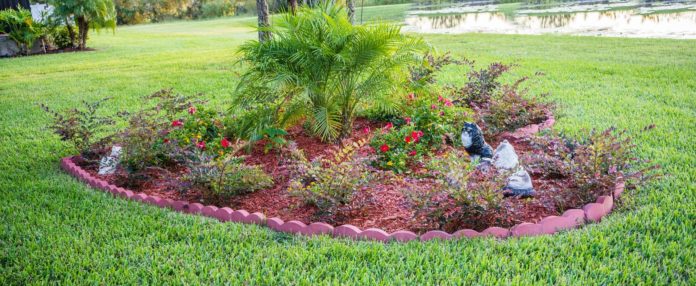
CULLMAN, Ala. – Warm, comfortable weather is around the corner with the arrival of spring. The Tribune spoke with Cullman County Extension Coordinator Tony Glover for some helpful tips with landscape renovations you can do in preparation for the warm weather season.
Glover shared, “It’s the time of year that people start getting spring fever and have a strong desire to do some landscaping. I always tell people that fall is a better time to landscape in the South, but I understand that you cannot fight human nature. The retail garden centers know this as well, so the best selection of plants is available in the spring rather than the fall. Now get out there and start working on that landscape project. A well landscaped home adds great value to your home and you can get some much-needed exercise for free.”
Glover shared these tips and web links on landscape work for your yard:
- Follow good landscape design principles.
- Glover: “A well-conceived landscape design, properly installed and well maintained, adds value to your property and enhances the quality of your life. Buy or check out a book on landscape design.”
- Help with design: aces.edu/go/design
- Focus first on low maintenance plants suitable to your site.
- Glover: “Once these plants are established in the right location, most require little, if any, supplemental water, fertilizers, or pesticides. Choose plants that can tolerate our large variability in moisture availability. The primary focus should be on plants that can tolerate extended dry conditions after establishment and occasional excessively wet winter periods.”
- Plant List to help you choose: aces.edu/go/plantlist
- Be sure to conduct proper planting.
- Glover: “Woody plants (shrubs or trees) can be transplanted now provided the planting is done correctly and the plants are kept well-watered the first year after planting.”
- Further advice on planting: aces.edu/go/planting
- Plant for impact.
- Glover: “Limit the number of plants with high water and maintenance requirements, placing them where they will have the greatest visual impact and convenient access to water during drought periods. Consider harvesting roof water to water these small areas.
- Learn on harvesting roof water: aces.edu/go/rainwater
- Avoid invasive plant species.
- Glover: “Do not plant exotic, invasive species. If these plants are present in your yard, remove them. They crowd out native plants and seriously threaten Alabama’s ecosystems and wildlife. One of the worst of the ornamental invasive is Chinese privet.”
- Learn to control types of invasive plants here: aces.edu/go/privet
- Aim for diversity!
- Glover: “Create a mosaic of trees, shrubs, groundcovers, native grasses and wildflowers. Monocultures, large expanses of the same plant species, are prone to disease and insect infestation and are not as sustainable as a diverse plant community with lots of variety including many native plants.”
- For more information on using native plants: aces.edu/go/nativeplants
- Avoid quick fix or extremely fast-growing screen plants.
- Glover: “Do not be fooled by the quick fix appeal of fast-growing plants. Such plants may require frequent pruning, which creates more clippings and yard waste. Also, fast growth yields lots of lush, green shoots which can attract certain pests. Leyland cypress is a case in point. It grows very fast but has many cultural and pest problems. Slower growing plants may take longer to fill in your landscape, but they will ultimately last longer and create less work.”
- List of Leyland cypress substitutes: aces.edu/go/leylandsubs
- Limit turf areas and the use of other water inefficient landscape techniques.
- Glover: “Turf can be a beautiful component of a landscape but it generally requires more water, fertilizer and maintenance than a properly selected mixture of trees, shrubs and other ground cover options. The efficient use of water in the landscape is the primary way to avoid non-point source pollution of our water supplies.”
- Choose turf species wisely.
- Glover: “Turfgrasses vary in their adaptability to climate, light, fertility needs, drought tolerance, pest susceptibility and maintenance requirements. Research their specific requirements prior to making this long-term decision. Your local Alabama Farmers Coop will know when to plant and seeding rates of commonly seeded grasses.”
- Further help on choosing the right turf: aces.edu/go/turf
- Glover: “Turfgrasses vary in their adaptability to climate, light, fertility needs, drought tolerance, pest susceptibility and maintenance requirements. Research their specific requirements prior to making this long-term decision. Your local Alabama Farmers Coop will know when to plant and seeding rates of commonly seeded grasses.”
- Glover: “Do not be fooled by the quick fix appeal of fast-growing plants. Such plants may require frequent pruning, which creates more clippings and yard waste. Also, fast growth yields lots of lush, green shoots which can attract certain pests. Leyland cypress is a case in point. It grows very fast but has many cultural and pest problems. Slower growing plants may take longer to fill in your landscape, but they will ultimately last longer and create less work.”
- Glover: “Create a mosaic of trees, shrubs, groundcovers, native grasses and wildflowers. Monocultures, large expanses of the same plant species, are prone to disease and insect infestation and are not as sustainable as a diverse plant community with lots of variety including many native plants.”
- Glover: “Do not plant exotic, invasive species. If these plants are present in your yard, remove them. They crowd out native plants and seriously threaten Alabama’s ecosystems and wildlife. One of the worst of the ornamental invasive is Chinese privet.”
- Glover: “Limit the number of plants with high water and maintenance requirements, placing them where they will have the greatest visual impact and convenient access to water during drought periods. Consider harvesting roof water to water these small areas.
- Glover: “Woody plants (shrubs or trees) can be transplanted now provided the planting is done correctly and the plants are kept well-watered the first year after planting.”
- Glover: “Once these plants are established in the right location, most require little, if any, supplemental water, fertilizers, or pesticides. Choose plants that can tolerate our large variability in moisture availability. The primary focus should be on plants that can tolerate extended dry conditions after establishment and occasional excessively wet winter periods.”
- Glover: “A well-conceived landscape design, properly installed and well maintained, adds value to your property and enhances the quality of your life. Buy or check out a book on landscape design.”




















